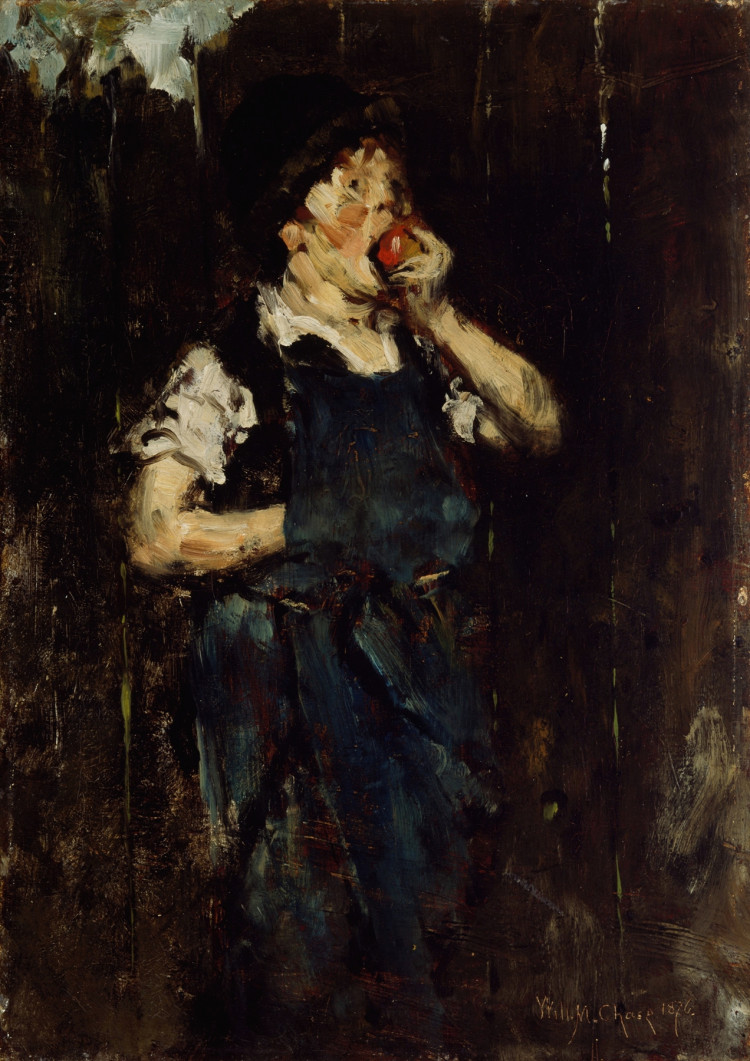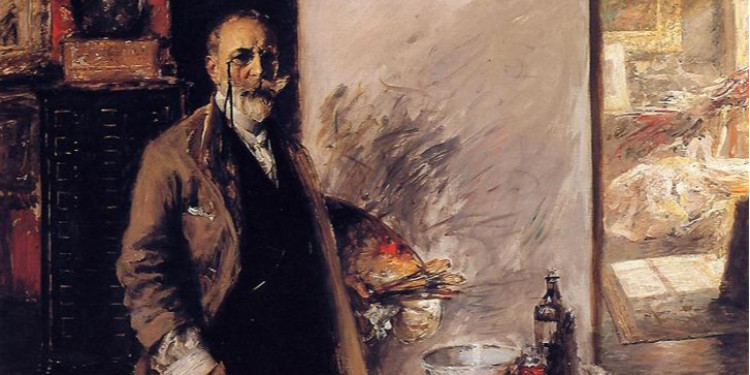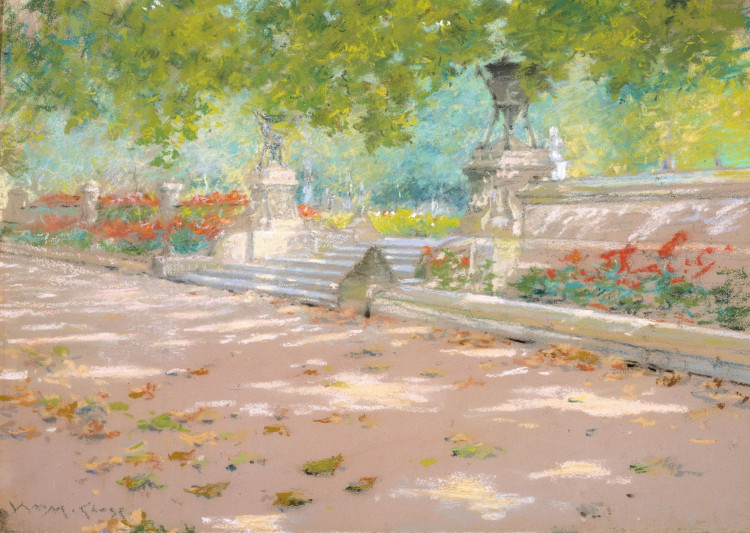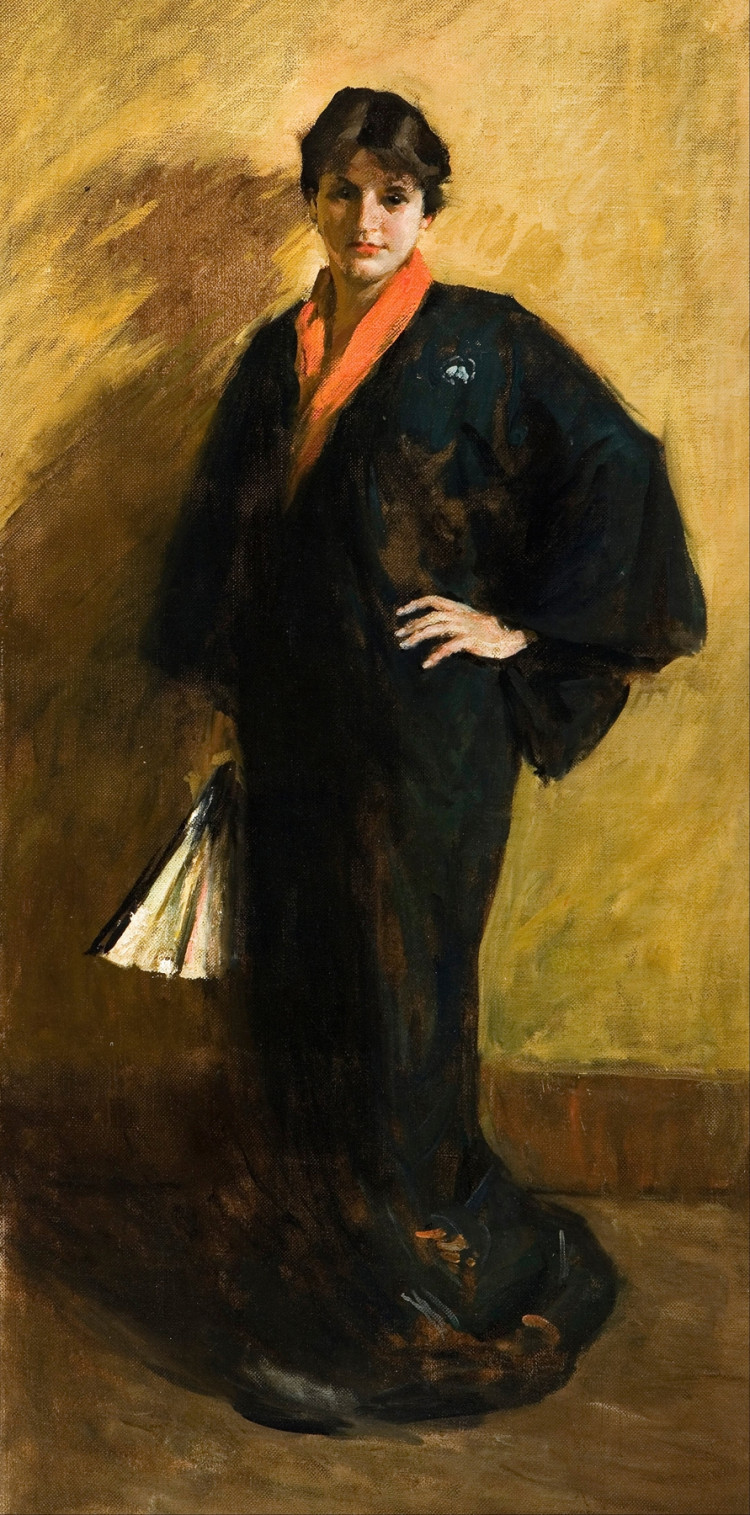William Merritt Chase (1849–1916) stands as one of the most important figures in American art during the late 19th and early 20th centuries. Celebrated for his ability to bridge European art traditions with a distinctly American flair, Chase's works have continued to inspire generations of artists and art lovers alike. Let’s dive deeper into his life, his influences, and the enduring impact he left on the art world.

Early Life and European Influences
Born in Indiana in 1849, William Merritt Chase began his artistic journey in America, but like many aspiring artists of the time, he sought formal training in Europe. He studied at the Royal Academy of Fine Arts in Munich, Germany, where he was deeply influenced by the Old Masters. During his time abroad, he became acquainted with the works of European artists such as Diego Velázquez and Frans Hals, whose loose brushwork and vivid depictions of light greatly impacted his own style.
While in Europe, Chase absorbed many aspects of European Impressionism, especially the French approach to capturing light and color. However, unlike many of his contemporaries who were drawn strictly to Paris, Chase also integrated lessons from the German and Dutch schools of painting, making his style a unique blend of European art movements.
Chase’s Artistic Style
William Merritt Chase is often associated with the American Impressionist movement, though he cannot be easily confined to any single style. His work displayed a masterful control of a broad range of genres, including portraits, still lifes, and landscapes. What sets Chase apart is his ability to capture the essence of the scene or subject with quick, bold brushstrokes while simultaneously preserving a sense of elegance and realism.
One of the key aspects of his work is his use of light. Whether painting leisurely scenes of his summer home in Shinnecock, Long Island, or urban parks in New York City, Chase used light in a way that created a sense of immediacy. His ability to balance the vibrancy of outdoor scenes with the intimate quietness of indoor settings is what makes his portfolio so diverse and captivating.

Teaching and Influence
Beyond his painting, Chase was a revered teacher, whose impact on American art extended far beyond his canvases. In 1896, he founded the Chase School, which later became the Parsons School of Design, one of the most prestigious art schools in the U.S. His teaching philosophy was based on the idea of giving artists the freedom to explore their own styles while providing the technical skills necessary to succeed.
Chase’s commitment to education led to his involvement with other institutions, such as the Art Students League of New York and the Pennsylvania Academy of the Fine Arts. Many of his students went on to become prominent figures in the art world, including Georgia O’Keeffe and Edward Hopper. Through his students, his influence rippled through the American art scene, helping to shape the course of modern art in the U.S.
Notable Works
Some of William Merritt Chase's most iconic works reflect his versatility and mastery over different subjects. Among his most famous pieces are:
"Idle Hours" (1894): This landscape painting depicts a serene scene of women relaxing on a hill at Shinnecock Hills. The play of light on the grass and the tranquil atmosphere make this a quintessential example of Chase’s outdoor paintings.
"In the Studio" (1884): This intimate indoor portrait offers a glimpse into the artist’s personal world, with meticulous attention to the details of his workspace. Chase’s mastery of texture and light is evident in how he portrays the rich fabrics and objects in his studio.
"A Friendly Call" (1895): This work captures an elegant interior scene with two women conversing. It’s a perfect example of how Chase could turn simple, everyday moments into compelling visual narratives.
Chase's Enduring Legacy
William Merritt Chase's contributions to American art cannot be overstated. His dedication to both his craft and teaching ensured that his influence would last long after his lifetime. By bringing European techniques to America while embracing the vibrancy of American life, Chase created a lasting impact on how we view both landscape and portrait art today.
In a time when art was rapidly evolving, Chase remained a steadfast bridge between the old and the new, tradition and innovation. His ability to straddle multiple genres and styles, along with his tireless work as an educator, has solidified his position as a cornerstone of American Impressionism and a crucial figure in art history.
So, the next time you find yourself in front of a William Merritt Chase painting, take a moment to appreciate not only the scene before you but also the wealth of knowledge, influence, and passion that went into each brushstroke.












Yorum Bırakın